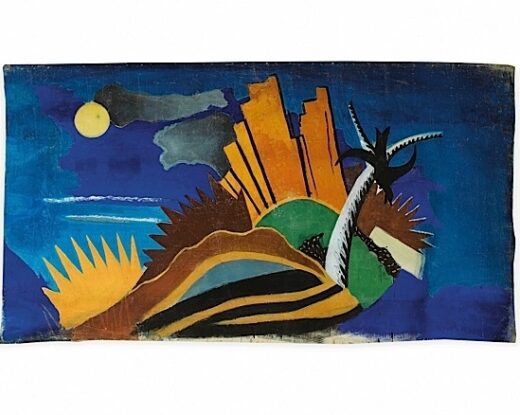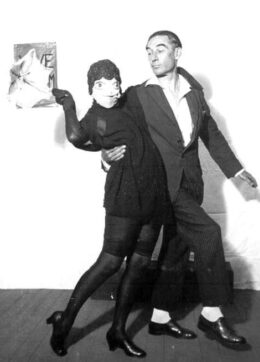
Printed
67 pages
Author(s)
Matoum en Matoumoisie
The play re-explores the motif of the two antithetical characters Matoum and Tévibar already used in Matoum et Tévibar (Matoum and Tévibar) in 1918. However, it does so by bringing the plot away from the opposition between regular and avant-garde poetry, which was the central theme of his first puppet comedy.
The fake messiah and the real messiah
Young candidates for marriage are swallowed whole by the Trou du Mariage (the Marriage Hole). Tévibar, who was swallowed, manages to come back out of the Hole. The Grand Sage Matoumoisien (The Great Wise Matoumasian) lets him know that this Hole makes the fake, the ugly, and the bad disappear; and because he was not swallowed, he might be the one who has come to forgive everyone and put an end to the threat of the Hole. Tévibar introduces himself to the assembly of the Grands Sages (the Great Wise Men) pretending to be who they expect him to be: Matoum. However, he has to accomplish three miracles and overcome the trial of the Trou de Justice (Hole of Justice). Tévibar makes the Grands Sages believe that he has overcome the first two miracles and then knocks them all out. He becomes a tyrant to all the people of Matoumoisie but ends up having to pass the trial of the Trou de Justice - it swallows him whole as he confesses to his deception. Matoum arrives to accomplish all the expected miracles. He transforms Matoumoisie, spreading joy and reconciliation but Tévibar stabs him. When the time comes to bury Matoum, his coffin is empty. Everybody bursts out laughing.
First performance
Palais de l'UCAF, World Exposition, 4 November 1937, by the Théâtre du Trapèze, staged by Roger Roussot.
Publications and translations
Pierre Albert-Birot, Théâtre, vol. IV. Mortemart: Rougerie, 1979.
